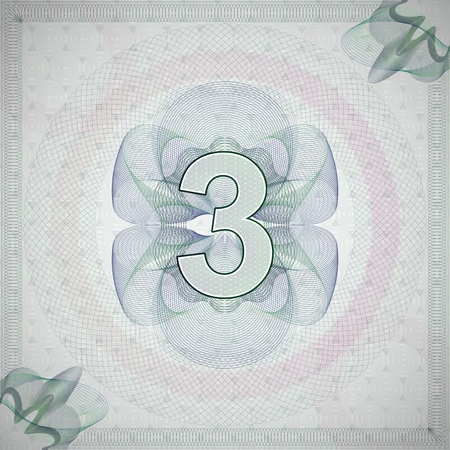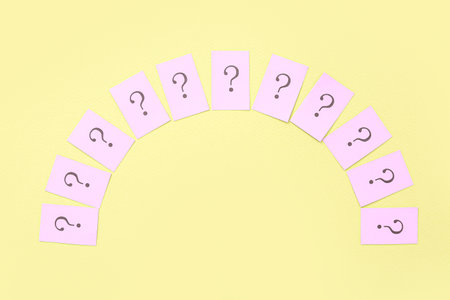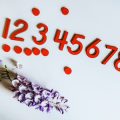Roots and Renaissance: Tarot’s Journey Through British History
Tarot’s story in Britain is woven with threads of mystery, migration, and spiritual searching. It first arrived on British shores in the late eighteenth century, carried by whispers from continental Europe. At that time, tarot was largely seen as a curious import—its ornate cards regarded more as parlour entertainment than mystical artefact. However, beneath this veneer, seeds were being sown for deeper exploration. As Victorian Britain blossomed into an age of occult revival and secret societies, tarot found new soil in which to take root. Influential groups such as the Hermetic Order of the Golden Dawn began to embrace tarot not merely as a tool for fortune-telling, but as a map for inner wisdom and spiritual transformation. This renaissance transformed the practice from novelty to sacred art. Over centuries, the British approach to tarot has reflected the nation’s own evolving relationship with spirituality—balancing rational scepticism with an enduring appetite for wonder. Today, as modern Britain navigates cultural shifts and renewed interest in ancient wisdom, tarot continues its evolution, shaped by both its storied past and the spiritual curiosity that persists within the British soul.
2. Modern Practitioners: Diverse Voices and Intuitive Pathways
Across the rolling hills of Yorkshire, the bustling streets of London, and the mystical landscapes of Cornwall, contemporary tarot readers in Britain are forging a vibrant tapestry of tradition and innovation. This new generation of practitioners reflects the unique cultural blend that is quintessentially British—where ancient wisdom dances with modern sensibility, and intuition is honoured alongside rational thought.
Modern British tarot practitioners come from all walks of life. Some are seasoned psychics inheriting family traditions, while others are artists, therapists, or community leaders who have discovered tarot as a tool for self-exploration and empowerment. The shared thread among them is an openness to personal intuition and a willingness to adapt traditional meanings to resonate with their clients’ stories.
| Practitioner Type | Approach | Distinctive British Element |
|---|---|---|
| The Heritage Keeper | Honours classic Rider-Waite symbolism and Celtic lore | Incorporates British folklore and ancestral tales |
| The Urban Mystic | Blends tarot with mindfulness and contemporary psychology | Hosts pop-up readings in London cafés and art galleries |
| The Eco-Seer | Connects tarot practice with earth-based spirituality | Uses local flora for rituals and readings on sacred sites like Stonehenge |
| The Digital Diviner | Offers online readings through social media and apps | Engages with a global audience while maintaining a distinctly British voice |
This diversity is further amplified by the intuitive methods each reader employs. For some, it’s about tuning into subtle energies during a reading; for others, it means encouraging clients to draw their own cards or even reinterpret the archetypes through a modern lens. In this way, British tarot practice is not static but ever-evolving—respecting its roots while courageously stepping into new terrain.
Above all, what truly defines contemporary tarot in Britain is its spirit of inclusivity. Tarot circles welcome people of all backgrounds, faiths, and identities. Whether gathered in historic pub back rooms or at vibrant LGBTQ+ festivals, these communities celebrate the collective journey—fostering dialogue between tradition and transformation that feels both magical and unmistakably British.

3. Sacred Spaces and Local Legends
Across the rolling hills and ancient woodlands of Britain, tarot practice finds itself intricately woven into the spirit of place. The British Isles are steeped in sacred sites—Stonehenge rising stoically from Salisbury Plain, the mystical isle of Avalon believed to lie beneath Glastonbury Tor, and the labyrinthine streets of London humming with centuries-old secrets. It is here, amidst these storied landscapes, that modern tarot readers often seek deeper resonance with their cards, drawing upon the potent energies that pulse through these lands.
The connection between tarot and British folklore is palpable. Practitioners might lay out a spread on the mossy stones of a fairy ring in Cornwall, or invoke the wisdom of Merlin when interpreting the Magician card in a windswept Welsh valley. Each region brings its own myths—Yorkshire whispers tales of barghests and black dogs, while the Scottish Highlands echo with stories of selkies and second sight. Tarot readings in such places become more than divination; they are dialogues with local spirits, ancestors, and the very land itself.
British tarot practitioners have also revived the art of storytelling as part of their craft. Some weave legends of King Arthur or Robin Hood into their readings, allowing querents to glimpse their own journeys reflected in these timeless narratives. By rooting their practice in both geography and story, contemporary British tarotists honour not only the cards but also the living legacy of their homeland’s lore. In this way, each shuffle and spread becomes an act of reverence—a bridge between past and present, seen and unseen.
4. Community, Connection, and the New Digital Circle
In contemporary Britain, tarot is no longer a solitary pursuit confined to candlelit corners or secretive parlours. Instead, it has blossomed into a tapestry of communities—woven together both in-person and through the digital ether. This evolution has given rise to a new era where spiritual seekers find kinship, mentorship, and mutual inspiration across the British Isles.
Local meet-ups in towns and cities from Brighton to Edinburgh are once again thriving. Cafés host regular tarot circles where enthusiasts gather over a pot of Earl Grey, exchanging readings and stories. These gatherings foster an authentic sense of belonging—a safe space to share insights, discuss interpretations, and support each other’s spiritual journeys. Here, wisdom flows as naturally as conversation, echoing the ancient tradition of oral storytelling that has long been central to British culture.
But perhaps the most transformative shift is occurring online. British tarot practitioners are harnessing technology not merely as a tool, but as a portal for deeper connection. Social media groups, virtual workshops, and live-streamed readings have created an inclusive digital circle that transcends geography. Whether you’re nestled in a Cornish village or navigating the bustle of London, meaningful connection is just a click away.
Community Type |
Main Features |
Cultural Nuances |
|---|---|---|
In-Person Tarot Circles |
Tea rituals, face-to-face readings, group discussions | Focus on tradition, hospitality, local folklore integration |
Online Forums & Groups |
Virtual workshops, instant messaging, collaborative spreads | Diverse voices across regions, inclusive language and accessibility |
Hybrid Events |
Live-streamed meet-ups with physical attendees and online participants | Blending British etiquette with global perspectives |
This merging of old and new forms—the village hall gathering alongside the encrypted Zoom call—reflects Britain’s enduring spirit: respectful of heritage yet ever-adaptive. The modern tarot community cultivates empathy and open-hearted dialogue, inviting everyone into the circle regardless of background or experience. In this sacred digital agora, the cards become more than divination tools; they are keys unlocking collective wisdom and shared transformation. And as these connections deepen, so too does the sense of purpose that guides Britain’s evolving tarot practice.
5. Tarot as Social Reflection: Shifting Attitudes and Meaning
Tarot in contemporary Britain is no longer confined to the shadowy corners of mysticism or the exclusive circles of the esoteric. Instead, its cards have become mirrors reflecting the nation’s ever-evolving social consciousness. In cities from Manchester to Bristol, tarot reading has transformed into a practice deeply entwined with modern British values—spirituality, mental wellbeing, inclusivity, and personal empowerment—all woven together by the threads of community and individual story.
Spirituality Reimagined
The British relationship with spirituality has shifted away from rigid dogma towards a more fluid, personal exploration. Tarot now serves as a gentle companion for those seeking meaning beyond conventional religion. Its archetypes speak in a language that resonates with seekers who value open-mindedness and self-discovery over inherited belief systems. In this new spiritual landscape, tarot spreads are laid out not just for prophecy but for dialogue—encouraging reflection and fostering inner trust.
Mental Wellbeing at the Forefront
No longer dismissed as mere fortune-telling, tarot has found its place within conversations about mental health. Therapists and wellness practitioners across Britain increasingly recommend tarot as a tool for mindfulness and emotional exploration. The act of drawing cards becomes a ritual of self-care, inviting people to gently confront their anxieties, hopes, and dreams. It’s not about predicting fate, but about empowering individuals to author their own stories—an approach perfectly attuned to Britain’s growing emphasis on mental wellbeing.
Inclusivity and Diverse Voices
The decks themselves are changing too. Modern British tarot embraces diversity in imagery and interpretation, reflecting a broader societal commitment to inclusivity. Readers from all backgrounds—LGBTQ+, BAME communities, neurodivergent voices—are finding space at the table. Stories once marginalised are now celebrated through custom decks and collaborative gatherings. The old stereotypes are dissolving; tarot in Britain today echoes the nation’s ongoing journey towards openness and acceptance.
This transformation of tarot practice is fundamentally about reclaiming agency. For many Britons, each card drawn is an invitation to participate actively in shaping their lives—to ask questions, to challenge norms, to seek healing and connection. Through shifting attitudes towards spirituality, wellbeing, and inclusion, tarot has become a living reflection of contemporary British society: diverse, resilient, and ever-curious about what lies just beyond the edge of certainty.
6. The British Tarot: Looking Forward with Grace and Vision
As we stand at the threshold of tarot’s future in Britain, there is a quiet strength found in the graceful weaving of tradition and innovation. The cards have long been trusted companions for seekers across these isles—from windswept coastlines to bustling city streets—and their journey is far from finished. Instead, it bends into new shapes, reflecting both the wisdom of the past and the bold curiosity of contemporary life.
Honouring Our Roots
The British approach to tarot has always been anchored in respect for its historical tapestry. Local practitioners continue to draw from time-honoured symbolism, Celtic folklore, and the esoteric schools that shaped early British occultism. This foundation keeps readings grounded and meaningful, reminding us that every shuffle and spread links us back to generations of spiritual explorers who sought answers beneath grey skies and ancient stones.
Embracing Progressive Possibilities
Yet, as society shifts, so too does the tarot. In modern Britain, readers are increasingly open to blending psychological insight, inclusive language, and digital platforms with traditional practice. Tarot circles thrive in coffee shops as much as in sacred groves; online communities connect seekers from Cornwall to the Highlands. New decks arise, celebrating diverse identities and contemporary mythologies—proof that tarot remains a living art form, willing to grow alongside the people it serves.
An Inspired Vision for Tomorrow
The future of British tarot shimmers with inspired possibility. Imagine gatherings where seasoned mystics and curious beginners share stories under moonlit skies; workshops where young artists collaborate with elder readers to create visionary new decks; spaces—both virtual and physical—where every voice feels heard and every question welcomed. The British tarot community has the potential to model inclusivity, creativity, and deep listening for the world.
A Story Still Unfolding
In honouring our roots while embracing transformation, we step forward with both reverence and imagination. The continuing evolution of tarot practice in contemporary Britain invites us all—to listen deeply, dream bravely, and become co-authors of this unfolding story. With grace and vision guiding each reading, the cards will surely reveal new paths for generations yet to come.


